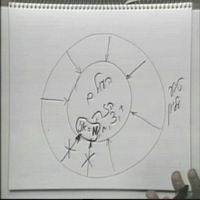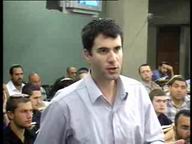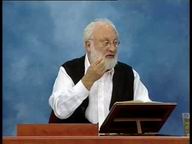TORONTO (Sunday, 13 May): In a lecture aimed at the students of the ARI Online Education Center course, Rav Michael Laitman, PhD lectured on the essence and the purpose of Kabbalah, its role in human evolution and specifically in the world today (aired live on Kabbalah TV’s Live Stream).
As Rav Laitman motioned to open the lecture with the first sentences of Baal HaSulam’s article The Essence of the Wisdom of Kabbalah, he quickly detoured, stating in a lot simpler words “What is it?” then proceeding to give his modern version of Baal HaSulam’s definition in the article:
Definition of Kabbalah:
“The wisdom of Kabbalah is the revelation of nature’s laws that are systematically arranged before us so as to bring us to the recognition of the Creator.” —Rav Laitman (from the lecture)
Rav Laitman continued the lecture with a discussion of how nature arranges life on the still, vegetative, animate and speaking degrees of nature, how a person living in this world perceives evolution through this arrangement, and how we develop through these degrees in order to achieve blissful, eternal life, perfectly balanced with nature.
The following quote by Rav Laitman (from the lecture) defines Kabbalah’s approach to the state we are being led to, and the ultimatum that Kabbalah states nature is placing before humanity in our era:
 Kabbalah on Balance with Nature:
Kabbalah on Balance with Nature:
“Balance with nature is expressed in the wisdom of Kabbalah by the words ‘equivalence of form.’ In other words, nature’s form is in giving everything, and man wants to receive everything, and thus our nature is opposite from nature in general. We therefore have to bring man to the degree of the Giver, to equalize with it. In the wisdom of Kabbalah, the degree of the Giver is called ‘equivalence of form’ or Dvekut (adhesion).
This is how, in the wisdom of Kabbalah, we define the final goal that we should reach. If we achieve it, we will have an eternal, perfect and tranquil life, as is nature itself. If we do not achieve it, nature will constantly pressure us until we completely improve and correct ourselves.”
The rest of the lecture was a Q&A session between Rav Laitman and the ARI Online Education Center students, questions dealing with how we should relate to violence, the role of religion in humanity’s evolution, how we should relate to Kabbalistic books, as well as many other questions.
Follow the links for the full lecture:
Rav Michael Laitman, PhD, “The Essence of the Wisdom of Kabbalah.” Lecture presented at the Toronto Bnei Baruch Education Center (13 May, 2007):
wmv video | mp3 audio (86 min)
Click Here to Sign Up for a Free Kabbalah Introductory Course – Starts Soon!


 Student:What’s the difference between the 6,000 years and the 600,000 souls? Does it have the same weight?
Student:What’s the difference between the 6,000 years and the 600,000 souls? Does it have the same weight? Rav Laitman: You think about spirituality as if it’s defined and deterministic like corporeality: “Here is a cup, so I call it ‘a cup,’ and there is a book, so I call it ‘a book’… and ‘a soul is a soul’”…
Rav Laitman: You think about spirituality as if it’s defined and deterministic like corporeality: “Here is a cup, so I call it ‘a cup,’ and there is a book, so I call it ‘a book’… and ‘a soul is a soul’”…